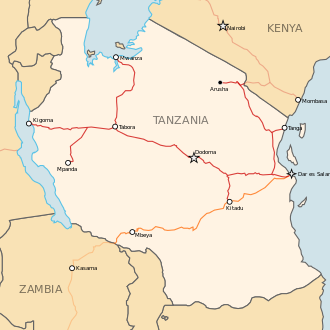Port Overview
Dar es Salaam is the principal port of Tanzania. It is the main cargo gateway not only for the Tanzanian hinterland and the Great Lakes region but also for landlocked neighbouring countries in east and central Africa such as Burundi, the Democratic Republic of Congo (DRC), Malawi, Rwanda, Uganda and Zambia
The port of Dar es Salaam is one of East Africa's leading freight gateways – a growing entry and exit of goods for local market and to many landlocked countries across East and Central Africa. The port is the Indian ocean entry point of a complex logistics network stretching much of central Africa. The port handles about 95 percent of Tanzania International trade across 12 deep-water berths. Tanzania Port Authority (TPA) operates all berths since January 2023. (TPA Handbook, 2023).
The port is accessible via 3-5km entrance channel that can allow vessels of up to 305 meters LOA and 265 meters breadth with a depth of 15.5 meters at Chart Datum. The port has a total quay length of 2.6 km with 12 Berths at Main Quay plus a Single Buoy Mooring (SBM) and a dedicated berthing area for coastal vessel at the lighterage Quay. Berths number 0 to11 has a depth between 10.2 and 15.5 meters for general cargo vessels. Berths No. 8 to 11 have an average depth of 11.0 meters and are mainly dedicated to container vessels. (TPA Handbook, 2016).
The port also has Grain Terminal facility (silos with storage capacity of 30,000 mt).
TPA is implementing a number of major projects including the Dar es Salaam Maritime Gateway Project (DMGP) which will allow the reception of larger vessels. Port modernization projects include strengthening and deepening of berths 1-7 and RORO terminal, dredging of entrance channel, turning circle and harbour basin, strengthening and deepening 8-11, and construction of a new terminal jet
Port website https://www.ports.go.tz/index.php/en/ports/ports
Key port information may also be found at: http://www.maritime-database.com
|
Port Location and Contact |
|
|---|---|
|
Country |
Tanzania |
|
Province or District |
Temeke |
|
Nearest Town or City with Distance from Port |
Dar es Salaam Located in the city |
|
Port's Complete Name |
Port of Dar es Salaam |
|
Latitude |
-6.82583333 |
|
Longitude |
39.30638889 |
|
Managing Company or Port Authority |
Tanzania Ports Authority (TPA) |
|
Management Contact Person |
Plasduce Mkeli Mbossa Director General, TPA Bandari Road PO Box 9184, Dar es Salaam Tanzania Tel: +255 22 2116250 Fax: +255 22 2130390 |
|
Nearest Airport and Airlines with Frequent International Arrivals/Departures |
Julius Nyerere International Airport, Dar es Salaam
International carriers: Air Zimbabwe, Airlink, As Salaam Air, Egyptair, Emirates, Ethiopian Airlines, Ewa Air, Flightlink, Fly540, Flydubai, Kenya Airways, KLM, LAM Mozambique Airlines, Malawian Airlines, Oman Air, Precision Ai, Qatar Airways, RwandAir, Saudia, Tropical Air, Turkish Airlines, Uganda Airlines, ZanAir These airlines fly to a variety of destinations, including Europe, the Middle East, Africa, and Asia. Please note that this list is not exhaustive and may change over time. It is always best to check with the airline directly to verify their current schedule and destinations. |
Port Picture
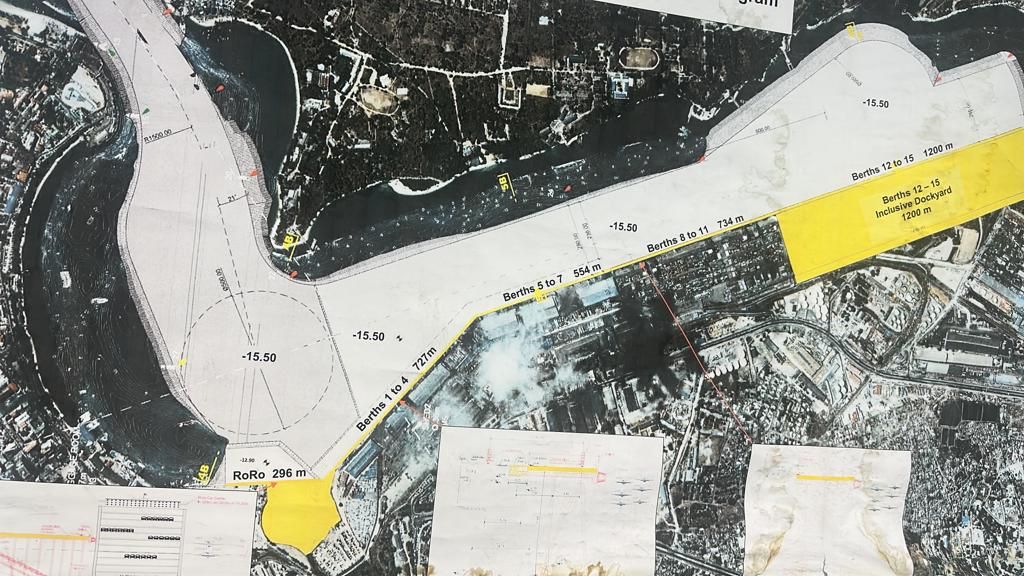
- General cargo Berth (0-5) for break bulk, dry bulk and one RORO berth (0) to handle vehicles.
- Container Terminal Berths (Berth 5 -11)
- Grain Terminal facility (silos with storage capacity of 30,000 tons). Inland Container Deposits (ICDs) facilities with the capacity of 24,300 TEUs and CFs with the capacity of holding 6,000 vehicles at once.
- A 150,000 MT Single Point Mooring (SPM) – for handling refined and crude oil.
- Kurasini oil Jetty (KOJ) for handling refined products (tanker size 45,000MT for KOJ1 and 5,000 tons for KOJ2)
Description and Contacts of Key Companies
The Tanzania Ports Authority (TPA) is a government entity, established by the Ports Act No. 17 of 2004, TPA is currently the sole operator of the facilities in Dar es Salaam port. TPA performs the role of landlord and operator with the main functions of promoting the use, development and management of the ports and their hinterlands. The Authority can and has in the past licensed and issued concessions for port services in Dar es Salaam.
For more information on port contacts, please see the following link: 4.4 Port and Waterways Companies Contact List.
Port Performance
Tanzania is a natural economic hub and gateway to east and central Africa, with one of Africa's busiest deep seaports and borders on eight nations. The Dar es Salaam port provides a gateway for 90% of Tanzanian trade and is also the access route to six landlocked countries including Malawi, Zambia, Burundi, Rwanda, and Uganda, as well as DRC.
A World Bank assessment published in 2013, the cost caused by inefficiencies at the Dar es Salaam port in 2012 was projected to be $ 1.8 billion for the Tanzanian economy and $ 830 million for neighbouring nations that relied on the facility.
The World Bank estimates that the losses amounted to 7% of Tanzania's yearly GDP. Due to rising port prices, Tanzanians and other East Africans had to pay more for imported commodities such as petroleum, cement, fertilizer, and medications.
Delays in accessing berths appear to be lessening, however container vessels were queuing for an average of 10 days (up to a maximum of 25 days in some situations) to get a berth in the port. Delays are worsened by dock operational inefficiencies and a shortage of storage, which increase the time required to unload and load a container ship, as well as insufficient synergy among key actors. The entire procedure takes days to complete, and space in the terminals is limited. As a result, the containers are frequently transported to an Inland Container Depot (ICD) near the port, where removal and storage fees apply to the cargo.

|
Occurs |
Time Frame |
|
|---|---|---|
|
Rainy Season |
Yes |
Bimodal from (March to May for long rains or Masika) and (October to December short rains or Vuli.) Unimodal (from December to April) |
|
Major Import Campaigns |
No |
|
|
Other Comments |
The port has limited storage space for both containerized and general cargo inside the port but have an extended dry port in Kwala in order to reduce port congestion. |
|
|
Handling Figures for F/Y 2022/23 |
|
|---|---|
|
Vessel Calls |
1,743 |
|
Container Traffic (TEUs) |
922,963 |
|
Handling Figures Bulk and Break Bulk for F/Y 2022/2023 |
|
|---|---|
|
Bulk (MT) |
3,342,962 |
|
Break bulk (MT) |
1,879,441 |
Discharge Rates and Terminal Handling Charges
For information on port rates and charges, please see the following link: https://www.ports.go.tz/images/Reports/Tarrifbook/TPA-Tariff-Book_pub.pdf
Berthing Specifications
|
Type of Berth |
Quantity |
Length (m) |
Maximum Draft (m) |
Comments |
|---|---|---|---|---|
|
Conventional Berth |
8 |
727m 554m |
15m 15.5m |
Berths 1-4 Berths 5-7 |
|
Container Berth |
4 |
734m |
10.2m |
Berths 8-11
|
|
Silo Berth |
N/A |
|
||
|
Berthing Tugs |
8 |
6 operational, 1 on standby 1 Unserviceable at time of writing |
||
|
Water Barges |
N/A |
|
The Dar es Salaam Maritime Gateway Project (DMGP) Financed by the Government of Tanzania jointly with the World Bank and the UK Foreign, Commonwealth and Development Office (FCDO) has invested $421 million in improving the effectiveness and efficiency of the Port of Dar es Salaam through strengthening of the physical infrastructure as well as Tanzania Port Authority (TPA) institutional capacity. The Port of Dar es Salaam has 12 deepwater berths with a total length of about 2,600 metres. The DMGP upgrades included the construction of the first dedicated roll-on, roll-off ("RoRo") infrastructure ramp designated as berth 0 and the reconstruction of and deepening alongside berths 1–7 to 14.5 meters so the port can now comfortably host large vessels, an increased on the average 8-meter draft before the expansion. The DMGP also included the upgrading of and deepening alongside berths 8-11, widening of the entrance channel as well as the turning basin to the end of Berth 11 and increasing the dept of the channel to 15.5m.
https://www.worldbank.org/en/news/feature/2022/01/25/striving-to-become-the-regional-port-of-choice
General Cargo Handling Berths
|
Cargo Type |
Berth Identification |
|---|---|
|
Imports - Bagged Cargo |
1-7 |
|
Exports - Bagged Cargo |
1-7 |
|
Imports and Exports - RoRo |
0 |
|
Other Imports |
0-7 |
Port Handling Equipment
The Tanzania Ports Authority (TPA) is a government-owned company responsible for the management and operation of ports in Tanzania, including Dar es Salaam Port. TPA took over the cargo handling services done by the Tanzania International Container Services (TICTS) Limited effectively as from 01 January 2023. The Government of Tanzania and the UAE signed a memorandum of understanding in February 2022 for DP World to run the port of Dar es Salaam, initially, before expanding to run other ports in the country. The MoU was followed by an inter-governmental agreement in October 2022 that was endorsed by parliament on June 10, 2023.
|
Equipment |
Available |
Total Quantity and Capacity Available |
Comments on Current Condition and Actual Usage |
|---|---|---|---|
|
Dockside Crane |
Yes |
11 (5-7MT) |
7 in use 5 under maintenance |
|
Container Gantries |
Yes |
8 (7-40mt) |
8 Operational |
|
Mobile Cranes |
Yes |
8 (35-65MT) |
4 in good condition 4 under repair |
|
Reachstacker |
Yes |
34 (45MT) |
27 in good condition |
|
RoRo Tugmaster (with Trailer) |
Yes |
1 |
In good condition |
|
Grain Elevator with Bagging Machines |
Yes |
4 Grain Bagging Machines 22 grain elevators |
14 in good condition |
|
Transtainer |
Yes |
23 |
In good condition |
|
Forklifts |
Yes |
133 |
11 Unservicable |
Container Facilities
Dar es Salaam Port has moved up 49 places in the World Bank's Container Port Performance Index, from 361st to 312th in 2022. This progress can be attributed to a variety of causes, including increasing port infrastructure investment, the acquisition of modern technology and equipment, and the deployment of new safety and security procedures. As a result of the Tanzanian government's efforts to upgrade and expand the port's infrastructure under the Dar es Salaam Maritime Gateway Programme (DMGP).
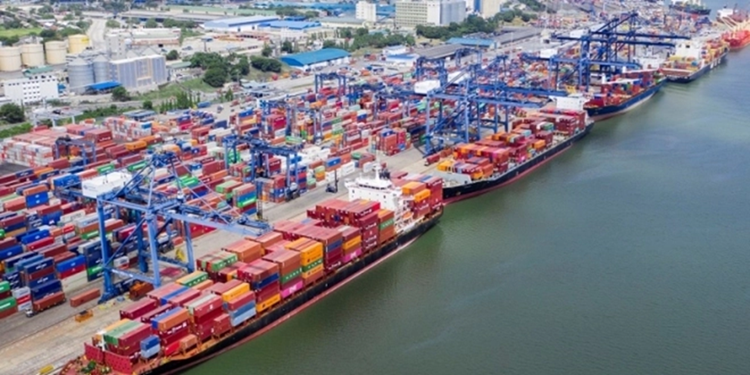
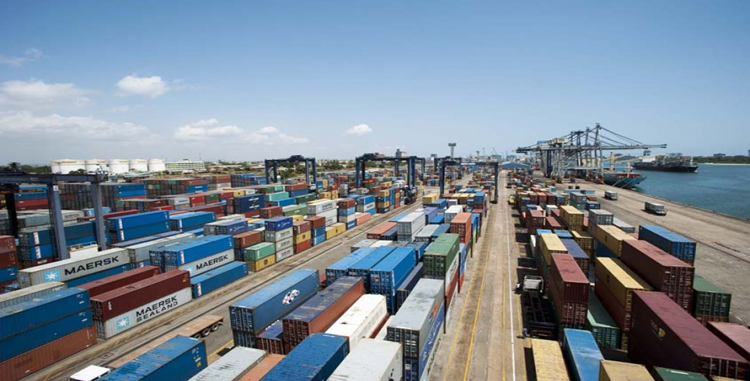
|
Facilities |
20 ft |
40 ft |
|---|---|---|
|
Container Facilities Available |
Yes |
Yes |
|
Container Freight Station (CFS) |
Yes |
Yes |
|
Refrigerated Container Stations |
Yes |
Yes |
|
Other Capacity Details |
N/A |
N/A |
|
Daily Take Off Capacity |
2808 |
|
|
Number of Reefer Stations |
438 |
|
|
Emergency Take-off Capacity |
N/A |
N/A |
|
Off take Capacity of Gang Shift |
N/A |
N/A |
Customs Guidance
The Tanzania Customs Integrated System (TANCIS) was introduced by the Tanzania Revenue Authority (TRA) in 2014. It has brought total transparency to the clearance process by handling all documentation online. The whole process can be carried out from the agent’s desk, leading to a significant time saving.
For more information on customs in Tanzania, please see the following link: 1.3 Customs Information.
Terminal Information
MULTIPURPOSE TERMINAL
The Multipurpose Terminal has a quay length of 797 meters and a total storage area of 222,000 square meters. It is equipped with modern cargo handling equipment, including cranes, forklifts, and reach stackers. The RORO Terminal has a quay length of 200 meters and a total storage area of 50,000 square meters. It is equipped with modern cargo handling equipment, including ramps and cranes. The terminal has a capacity of 200,000 vehicles per year. In 2022, the Multipurpose Terminal handled 14.1 million tons of cargo and the RORO Terminal handled 200,000 vehicles. These numbers are expected to grow in the coming years.
GRAIN AND BULK HANDLING
The Port of Dar es Salaam has a fully automated grain handling facility with silos with the capacity of 30,000 metric tons. Grains can be discharged and bagged along the quay at an average of more than 2,000 tons in 24 hours or transferred to silo using dump trucks. The grain terminal has concrete silos, fumigation, aeration and temperature control facilities. The break-bulk section of a port has a quay of 1,478 meters comprising of 7 main quays. The machinery available for grain discharge are 4 x bagging machines with capacity of 100 tons per hour each and a maximum of 9600 tons per 24 hrs
MAIN STORAGE TERMINAL
The Dar es Salaam Port has a variety of storage facilities, including warehouses, silos, and tanks. The port has a total of 10 warehouses with a combined area of 64,463 square meters. Of these warehouses, 3 warehouses are specifically dedicated to the storage of food supplies. These warehouses have a combined area of 21,500 square meters as well as silos which can store up to 30,000 tonnes of grains.
|
Storage Type |
Number of Storage Facilities |
Area (m2) |
|---|---|---|
|
Bagged Cargo |
8 |
|
|
Refrigerated Cargo |
438 |
|
|
General Cargo |
Stevedoring
TPA provides stevedoring for all geared vessels on a 24-hour basis. The shift performance on general cargo is 200 tonnes per gang per shift and 60 TEU on containerised cargo per gang per shift (TPA Handbook 2020)
Stevedoring activities at Dar es Salaam Port:
- General cargo, loading and unloading of non-containerized cargo,
- Containerized cargo, loading and unloading of containerized cargo.
- Bulk cargo, loading and unloading of bulk cargo, such as grain, coal, and minerals.
Hinterland Information
The primary means of accessing the hinterland from the port of Dar es Salaam are via the national road and two rail networks.
Road Network
The main road link from the Port of Dar es Salaam to the rest of Tanzania is the A7 highway. This highway connects the port to the capital city of Dodoma, as well as to other major cities such as Mwanza, Arusha, and Mbeya. The A7 highway is also a major transit route for goods traveling to and from neighbouring countries such as Zambia, Malawi, Rwanda, Burundi, and DR Congo.
Other important road links from the Port of Dar es Salaam include:
- The A14 highway to Tanga – Horohoro Border crossing - Kenya
- The B1 highway to Morogoro – Dodoma- Isaka-Mwanza-Mtukula-Uganda, and Rusumo- Rwanda-DR-Congo.
- The B12 highway to Iringa – Mbeya- (Tunduma- Zambia) and Malawi
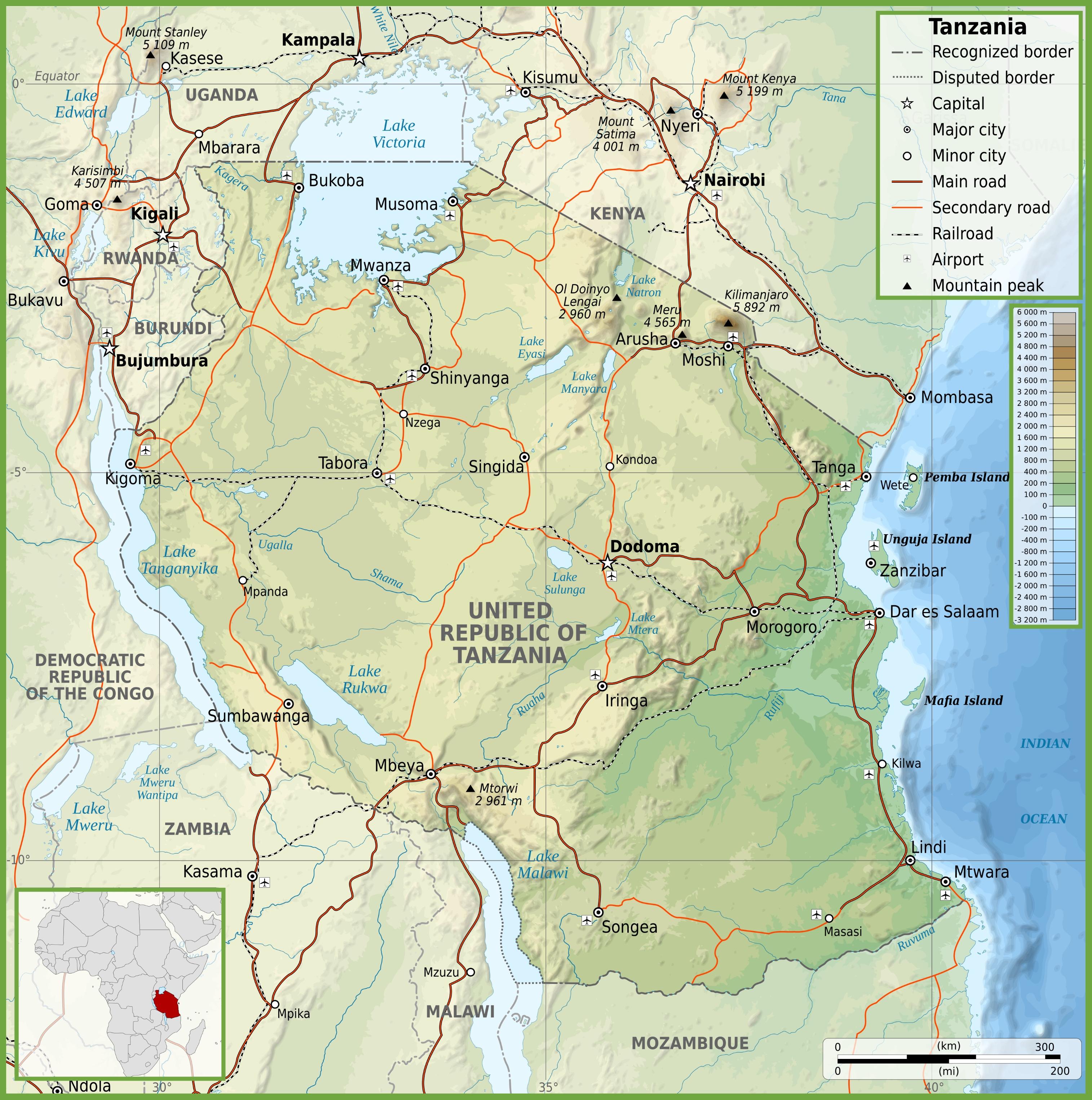
Rail links
The Port of Dar es Salaam is also connected to the rest of Tanzania and neighbouring countries by a network of railways.
TAZARA. This railway connects the Dar port to the Zambian capital of Lusaka, through Regions in Tanzania such as Pwani, Morogoro, Makambako, and Mbeya.
TRC: (the Central Corridor) is another important railway link from the Port of Dar es Salaam to the neighbouring countries of Uganda via Mwanza and DR Congo via Kigoma:
- The Central Line from Dar Port to Tabora, Mwanza, Katavi (Mpanda) and Kigoma
- The Northern Line from Dar Port to Tanga, Kilimanjaro and Arusha.
Port Security
The Port of Dar es Salaam has several security measures in place to protect the port and its cargo from crime and terrorism. These measures include Physical security of the port by a high fence with several security gates with all visitors required to have a valid pass. Employees of the port and other authorized personnel must wear ID badges. The port is also patrolled by security guards 24 hours a day. The port has invested in electronic security with number of CCTV cameras and other electronic security systems in place to monitor activity within the port.
All cargo entering or leaving the port is scanned for contraband and other threats. The port works closely with the Tanzania Police Force and other law enforcement agencies to combat crime and terrorism. The port implemented an Integrated Security System (ISS) which was commissioned in late 2015 to integrate all the port's security systems into a single platform to improve the efficiency and effectiveness of the port's security operations. The port is also investing in cybersecurity measures to protect its computer systems and networks from cyberattacks.
|
Security |
|
|---|---|
|
ISPS Compliant |
Yes |
|
Current ISPS Level |
ISPS Level 1 1 |
|
Police Boats |
Yes |
|
Fire Engines |
Yes |



